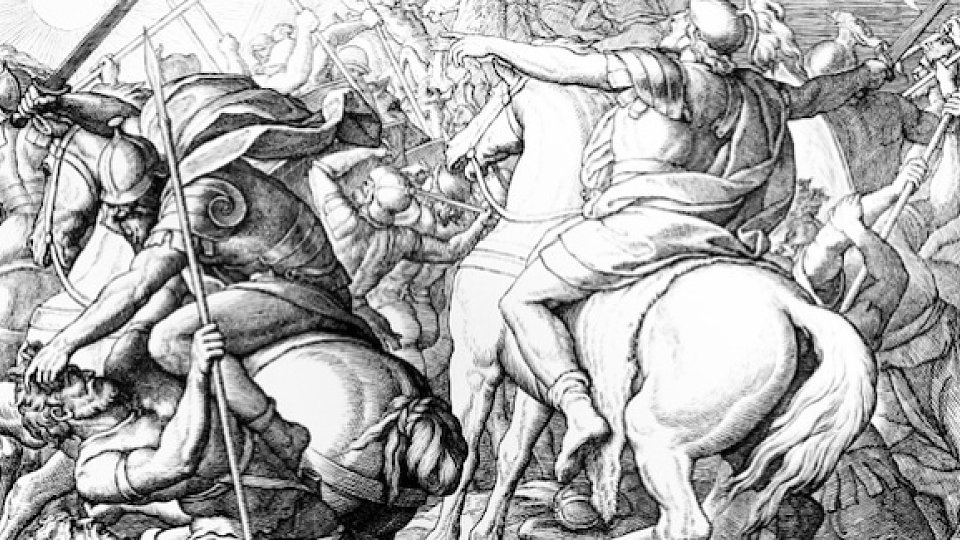God’s Violence in the Old Testament: The Problem

Among the questions I’m most often asked about the Bible is this one: “Why does God seem so loving in the New Testament but angry, harsh, and vengeful in the Old Testament?” These violent passages not only trouble thoughtful Christians but they give fodder to the new atheists who assert, sometimes rightly, that religion is the source of much of the violence in the world. Let’s consider three categories of Old Testament texts that are morally problematic: the “crimes” for which God prescribes the death penalty, God’s anger and wrath in punishing his people, and God’s command to the Israelites to commit genocide. The death penalty. There are numerous “crimes” for which God, through the Law of Moses, requires the death penalty. Among these are sacrificing to a god other than Yahweh (Exodus 22:20), persistent rebelliousness on the part of a child (Deuteronomy 21:18–21), a child who hits or curses his or her parents (Exodus 21:15 and 17), working on the Sabbath (Exodus 35:2), premarital sexual intercourse (Deuteronomy 22:13–21), and the requirement for a priest to burn his daughter alive if she became a prostitute (Leviticus 21:9). God’s anger and wrath. In the Old Testament, God’s anger repeatedly burns against his people for their disobedience. At times, the punishment he dispenses seems particularly harsh, unjust, and disproportionate. Let’s consider just one example. In 2 Samuel 24, we find that King David decided to take a census of the men of fighting age. The prophet Gad was sent to David to announce God’s displeasure with the taking of the census. The punishment for David’s sin: “The Lord sent a pestilence on Israel from that morning until the appointed time; and seventy thousand of the people died” (2 Samuel 24:15). David makes a decision that does not please God, and God kills 70,000 Israelites for it? How could this action ever be reconciled with a God of mercy, compassion, justice, and love? Genocide in the name of God. I’ll mention one last category of scriptures related to the violence of God: those that describe the conquest of Canaan. At the time the Israelites entered the land to conquer it, Canaan was populated with small city-states or kingdoms made up of various ethnic groups speaking similar languages. God promised Israel that he would give them this land, but to do so these people had to be displaced. This is problematic enough, but God wasn’t asking the Israelites to forcibly relocate them to other lands. God instructed the Israelites to kill every man, woman, and child among these Canaanites. In Deuteronomy 20:16–18, Moses gives these instructions: “As for the towns of these peoples that the Lord your God is giving you as an inheritance, you must not let anything that breathes remain alive. You shall annihilate them—the Hittites and the Amorites, the Canaanites and the Perizzites, the Hivites and the Jebusites—just as the Lord your God has commanded.” The Hebrew word for “annihilate” has as its root herem (also transliterated as cherem or sometimes charam). The classic Brown-Driver-Briggs Hebrew and English Lexicon notes the meaning of the word in English is “to exterminate.” It also has the sense of devoting something to God by completely destroying it. This is sometimes translated as “ban”—a word that in this context means “given to God by complete destruction.” In Joshua 6:20b–21, you can read about what this looked like as the Israelite army entered the town of Jericho: the Israelites “charged straight ahead into the city and captured it. Then they devoted to destruction by the edge of the sword all in the city, both men and women, young and old, oxen, sheep, and donkeys.” After the destruction of Jericho, next would come the people of Ai, then the people of Makkedah and Libnah and Lachish and Eglon and Debir—every man, woman, and child slaughtered and dedicated to God. In the end, the entire population of thirty-one city-states was utterly destroyed. I suspect that most people who read the Bible either don’t think about this, gloss over these sections, or skip them altogether. I was fourteen years old when I first read the Book of Joshua. The stories didn’t trouble me at that time. They were epic battles with great story lines and heroic figures. Who doesn’t enjoy reading about how the walls of Jericho “came tumbling down”? Behind each story was the idea that God was fighting on behalf of his people. I suspect that’s how most people read these stories today. But when I grew up, I reread these stories and began to think about the humanity of the Canaanites. These were human beings who lived, loved, and had families. Among them were babies and toddlers, mothers and fathers. Yet they were all put to the sword by “the Lord’s army.” Thirty-one cities slaughtered with no terms of surrender offered and no chance to relocate to another land. I came to see the moral and theological dilemmas posed by these stories. How do we resolve the moral and theological dilemmas presented by these and other texts like them? I'll follow this post with two others, presenting excerpts from the chapter in Making Sense of the Bible, “God’s Violence in the Old Testament,” that attempt to explain these difficult passages in the Bible. The chapter on violence is one of 32 essays addressing similar kinds of questions in the Bible. Today's post is an excerpt from a chapter by the same name in my book, Making Sense of the Bible (HarperOne, 2014). The image above is a digitally restored photograph from an original book, Die Bibel in Bildern (Bible with engravings), dated 1860. It's of an engraving by the German painter Julius Schnorr von Carolsfeld (March 26, 1794 – May 24, 1872), based on Joshua 10:7-13. Read part two in this series – God's Violence in the Old Testament: Possible Solutions. Read part three in this series – God's Violence in the Old Testament, Part 3: Possible Solutions